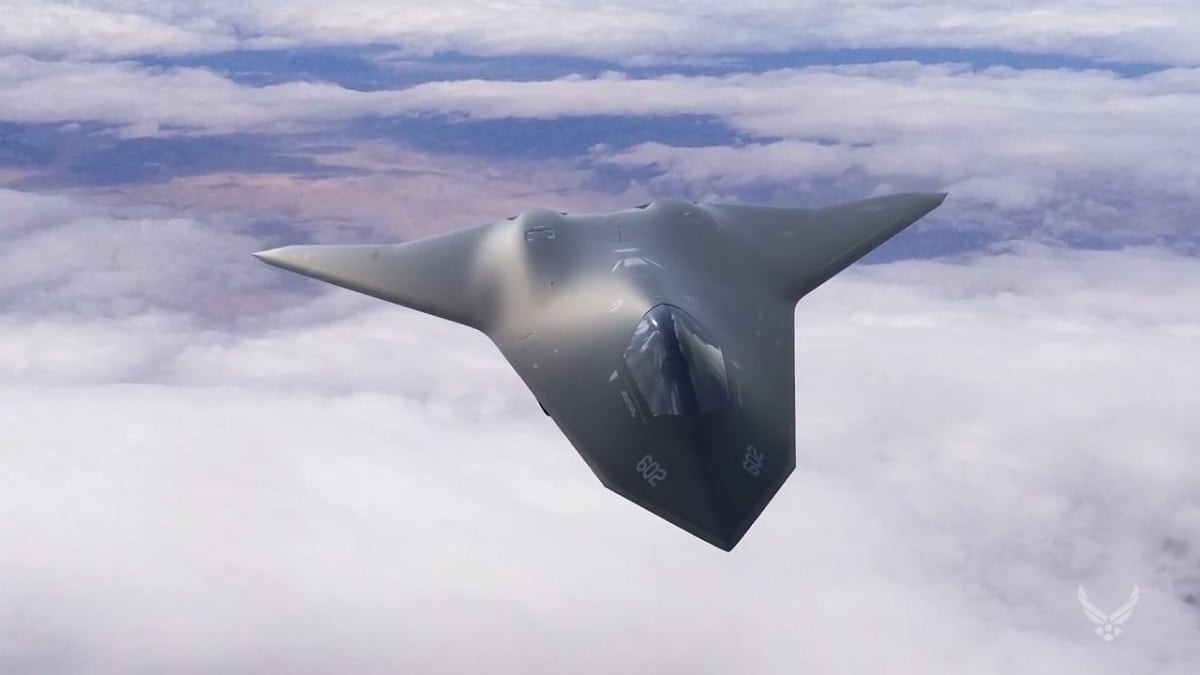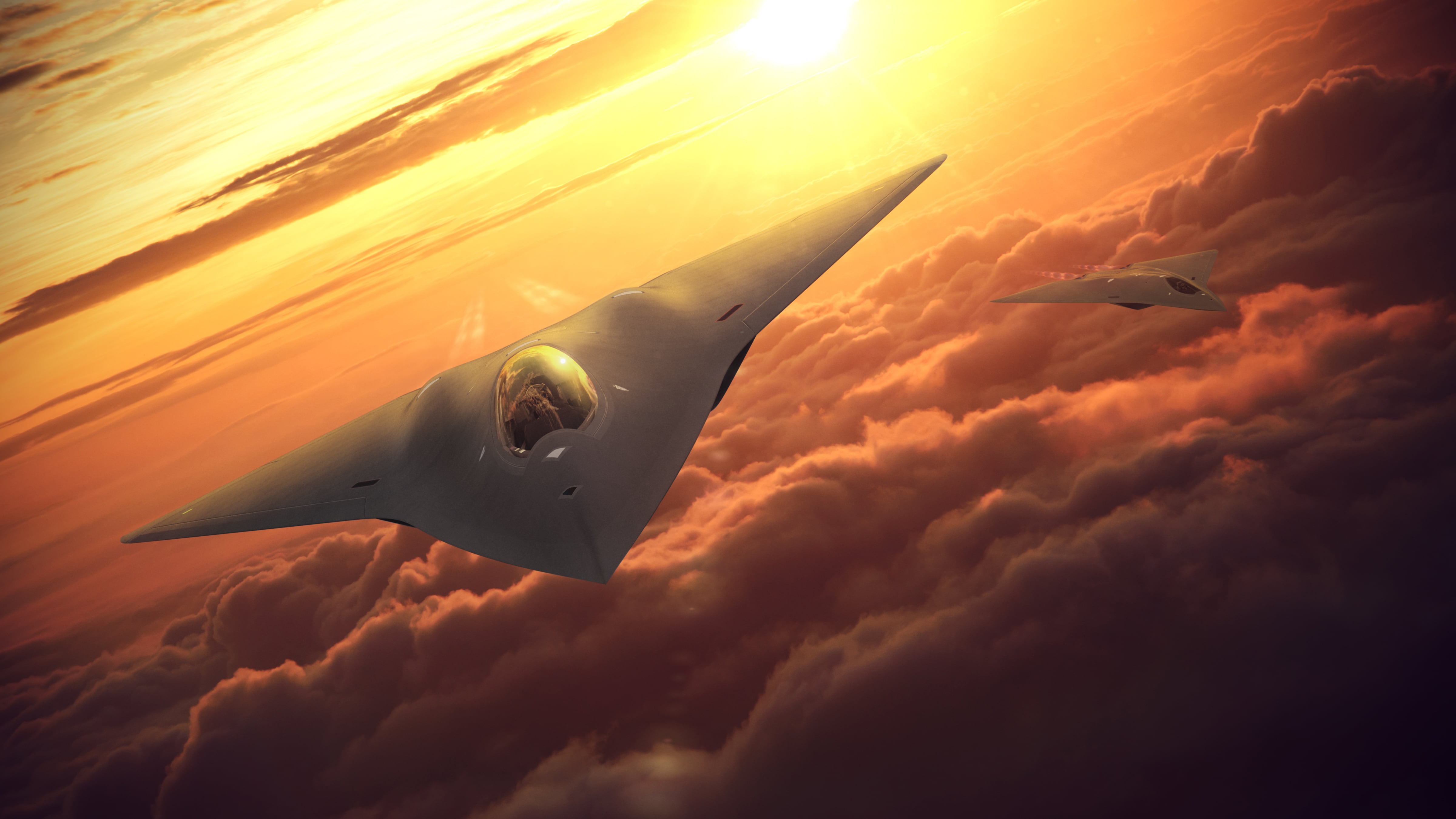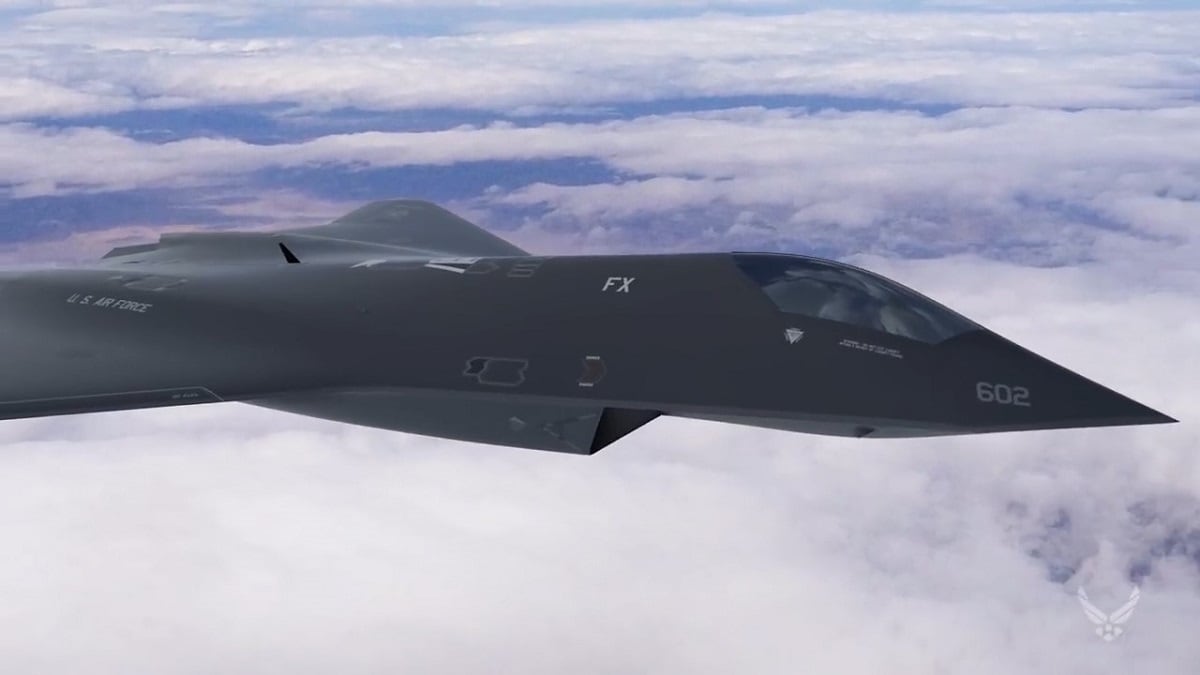WASHINGTON — The U.S. Air Force is preparing to radically alter the acquisition strategy for its next generation of fighter jets, with a new plan that could require industry to design, develop and produce a new fighter in five years or less.
On Oct. 1, the service will officially reshape its next-generation fighter program, known as Next Generation Air Dominance, or NGAD, Will Roper, the Air Force’s acquisition executive, said during an exclusive interview with Defense News.
Under a new office headed by a yet-unnamed program manager, the NGAD program will adopt a rapid approach to developing small batches of fighters with multiple companies, much like the Century Series of aircraft built in the 1950s, Roper said.
“Based on what industry thinks they can do and what my team will tell me, we will need to set a cadence of how fast we think we build a new airplane from scratch. Right now, my estimate is five years. I may be wrong,” he said. “I’m hoping we can get faster than that — I think that will be insufficient in the long term [to meet future threats] — but five years is so much better than where we are now with normal acquisition.”
The Century Series approach would be a notable departure from the Air Force’s former thinking on its future fighter. In its “Air Superiority 2030” study released in 2016, the Air Force described a long-range, stealthy sensor-shooter called “Penetrating Counter Air,” which would act as NGAD’s central node networked with sensors, drones and other platforms. The Air Force would use prototyping to speed along key technologies in the hope of maturing them early enough for inclusion in advanced aircraft fielded in the early 2030s.
But what Roper calls the “Digital Century Series” would flip that paradigm: Instead of maturing technologies over time to create an exquisite fighter, the Air Force’s goal would be to quickly build the best fighter that industry can muster over a couple years, integrating whatever emerging technology exists. The service would downselect, put a small number of aircraft under contract and then restart another round of competition among fighter manufacturers, which would revise their fighter designs and explore newer leaps in technology.
The result would be a networked family of fighters — some more interrelated than others — developed to meet specific requirements and including best-in-breed technologies aboard a single airframe. One jet might be optimized around a revolutionary capability, like an airborne laser. Another fighter might prioritize state-of-the-art sensors and include artificial intelligence. One might be an unmanned weapons truck.
RELATED

But the point, Roper said, is that instead of trying to hone requirements to meet an unknown threat 25 years into the future, the Air Force would rapidly churn out aircraft with new technologies — a tactic that could impose uncertainty on near-peer competitors like Russia and China and force them to deal with the U.S. military on its own terms.
Imagine “every four or five years there was the F-200, F-201, F-202 and it was vague and mysterious [on what the planes] have, but it’s clear it’s a real program and there are real airplanes flying. Well now you have to figure out: What are we bringing to the fight? What improved? How certain are you that you’ve got the best airplane to win?” Roper wondered.
“How do you deal with a threat if you don’t know what the future technology is? Be the threat — always have a new airplane coming out.”

How does the Air Force get there?
Three industrial technologies enable a Century Series approach for NGAD and will set requirements for participants, Roper said. The first is agile software development — a practice where programmers quickly write, test and release code, soliciting feedback along the way from users.
The second, open architecture, has long been a buzzword in the defense community, but Roper said industry often uses it to describe a system with plug-and-play hardware. NGAD, ideally, would be fully open, with interchangeable hardware and the ability for a third party to develop software for the system.
The final technology, digital engineering, is the most nascent and possibly the most revolutionary, Roper said. While aerospace engineers have used computers for decades to aid in the creation of aircraft, only recently have defense companies developed 3D-modeling tools that can model an entire life cycle — design, production and sustainment — with a high level of accuracy and fidelity. The process would allow companies to not only map out an aircraft in extreme detail, but also model how a production line would work using different levels of manning or how maintainers would carry out repairs at a depot.
“You could start learning so much before you ever bent the first piece of metal and turned the first wrench, so that when you did do it for the first time, you already have learned. You’re already up to a level of proficiency that in the past you would have to be in the 100th aircraft to have,” he said. “And then if you kept going and you modeled the maintenance, then you could go after the part of the life cycle that constitutes the 70 percent of what we pay."
Few defense programs have used digital engineering so far, Roper said. The Air Force is requiring Northrop Grumman and Boeing to use the technique to develop their respective versions of the Ground Based Strategic Deterrent.
RELATED

Boeing has also demonstrated the technology with its clean-sheet T-X trainer, taking its design from concept to first flight in three years and beating out two competitors that offered modified versions of existing jets.
During a May visit to Boeing’s production facility, Paul Niewald, the company’s chief engineer for the T-X program, described how the company crafted its digital T-X design with such precision that parts could be joined without shims — the material used to fill in gaps between the pieces of an aircraft — and only one master tool was needed during the plane’s production.
In total, Boeing was able to reduce by 80 percent the manual labor needed to manufacture and assemble the aircraft, Niewald said.

But creating a simple training jet like the T-X is much different than manufacturing a penetrating fighter jet like the NGAD, and there is no proof that those new manufacturing techniques will work for a more advanced aircraft, argued Richard Aboulafia, an aerospace analyst with the Teal Group.
Aboulafia suggested the Air Force might be “overreacting” to the struggles of the F-35, where a “one-size-fits-all” approach and a focus on software and sensors produced a very expensive aircraft that took almost two decades to develop. But a Century Series approach, he warned, could prioritize the development of new air vehicles at the expense of investments in new weapons, radars, sensors, communications gear or other enabling technology.
“With the F-35, we had too much [emphasis on] systems and not enough [on the] air vehicle. Maybe this is going too far in the other direction,” he said. “Isn’t the truth somewhere in between where you have two or three air vehicles but a greater resource allocation for systems? In other words, the truth isn’t the F-35 and the truth isn’t the Century Series. Can’t we just think in terms of something in between, a sensible compromise?”
Rebecca Grant, an aerospace analyst with IRIS Independent Research, expressed enthusiasm for a new fighter design effort, saying that engineers could push out options for a Century Series style effort “extremely quickly.” However, she added that the choice of engine, the integration of its communications suite, and the decision whether to make the platform manned or unmanned would be key variables influencing the design of the air vehicle.
“[A Century Series approach] strikes me that it truly is traditional in a way because this is how it was done in the past. And I think that’s what they’re trying to get to. They want fresh designs. But the difficulty is always as you start to make the most important trade-offs and identify the most important criteria,” she said. “Those become pretty serious driving functions pretty quickly."
A (potential) game plan
The new NGAD program office will determine the final acquisition strategy for the Digital Century Series — including the length of the development cycle, procurement quantities and contracting mechanisms. However, Roper revealed to Defense News his thinking for how the program might work:
- Put at least two manufacturers on contract to design a fighter jet. These could include the existing companies capable of building combat aircraft — Boeing, Lockheed Martin and Northrop Grumman — as well as new entrants that could bring a unique technology to the table.
- Have each company create a hyper-realistic “digital twin” of its fighter design using advanced 3D modeling. Use those models to run myriad simulations of how production and sustainment could occur, hypothetically optimizing both and reducing cost and labor hours.
- Award a contract to a single fighter manufacturer for an initial batch of aircraft. Roper said that industry could build about a squadron’s worth of airplanes per year, or about 24 aircraft. Include options in the contract for additional batches of aircraft. Air Combat Command leadership has told Roper that 72 aircraft — about the number of aircraft in a typical Air Force wing — would be a viable amount for normal operations.
- While that vendor begins production, restart the competition, putting other companies on contract to begin designing the next aircraft.
As it forms the NGAD acquisition strategy, the new program office will also explore how defense primes would be compensated for their work. Most current Air Force programs are awarded to the company that can provide the most capability at the lowest price, leading to a status quo where vendors underbid to secure a contract and reap profits only when platforms are mass-produced and sustained.
RELATED

But if a Digital Century Series construct is adopted, the Air Force may pay companies more money upfront during the design phase and require them to produce planes with a shorter design life; for instance, a jet with a lifespan of 6,000 flight hours instead of manufacturing aircraft designed to be kept in the skies for 20,000 hours, Roper said.
"That opens up the opportunities to do things very differently, different structural designs, not doing full-scale fatigue testing and all of things we do on the geriatric Air Force to keep things flying,” he said. “Where is the sweet spot where we are keeping airplanes long enough to make a real difference but not so long that we’re paying a premium to sustain them or not able to refresh them with better aircraft?”
One obstacle to the Digital Century Series approach may be persuading Congress to approve the necessary funding. The House Armed Services Committee already recommended cutting funding for the NGAD program in the fiscal 2020 budget request, from $1 billion to $500 million — a sign that the committee may not be sold on the Air Force’s path forward.
Roper said the idea has generated a “good response” from the congressional defense committees but acknowledged that lawmakers have questions about the approach. He also noted there will need to be a means to pay the bills, particularly in the early stages of the development cycle when multiple companies are on contract to design aircraft.
“I think the theory is sound, it’s the funding required and how big of an industry base we can sustain,” he said. “I don’t want to leave companies out, but I also don’t want to go so big that we fail because of funding, not because of the soundness of the idea.”
Valerie Insinna is Defense News' air warfare reporter. She previously worked the Navy/congressional beats for Defense Daily, which followed almost three years as a staff writer for National Defense Magazine. Prior to that, she worked as an editorial assistant for the Tokyo Shimbun’s Washington bureau.




